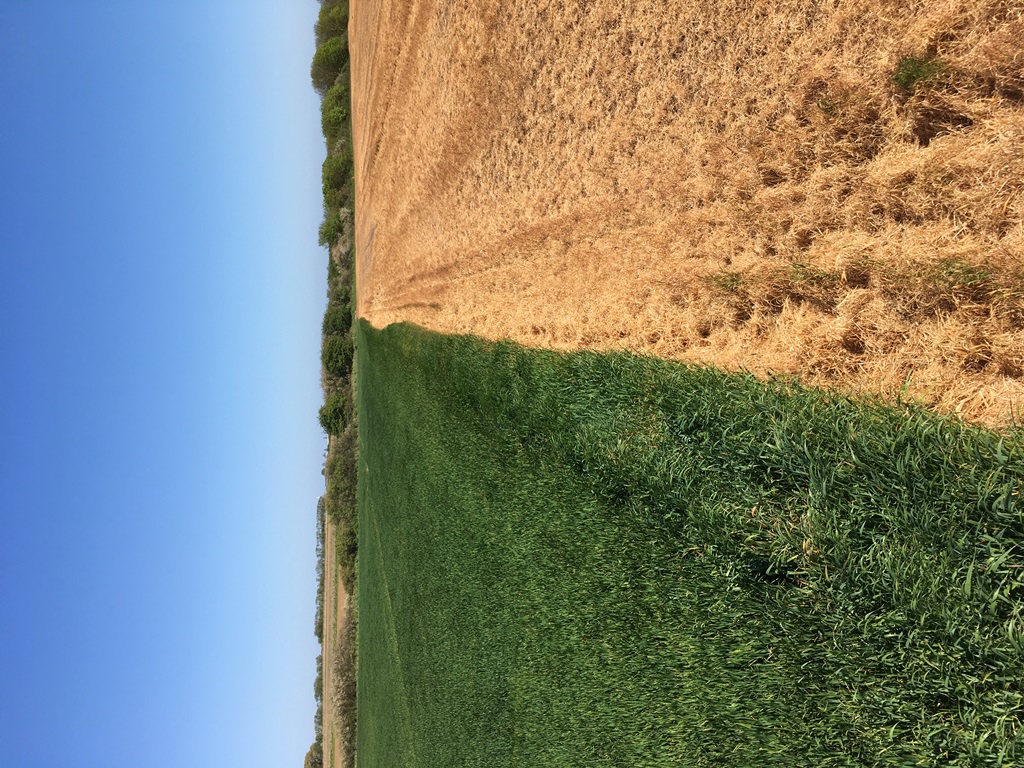 About a month ago I was debating the relative merits of spring cropping versus fallow. Back then I was firmly on the side of getting the drill out to fill its hopper with peas or spring wheat – with fixed costs to justify and with crop prices on the rise it seemed the right thing to do.
About a month ago I was debating the relative merits of spring cropping versus fallow. Back then I was firmly on the side of getting the drill out to fill its hopper with peas or spring wheat – with fixed costs to justify and with crop prices on the rise it seemed the right thing to do.
But now I’ve largely changed my mind – at least Mother Nature decided to change my mind for me. With less than 5mm of rain in the seven weeks from early March to late April we will not be seeding the heavy land. Where we did drill those fields that have a mix of soils, the seed in the lighter land has chitted but the more difficult clay is very patchy. So for the first time I can ever remember we have 25% of the farm down to fallow. This makes the place look dispiritingly idle even by comparison to the days of set-aside 15 years ago.
The switch in the weather from two to three times the rainfall norm to a twentieth of the monthly average is remarkable to say the least. Looking on the bright side, the spring crops on the lighter land that were drilled into moisture look passable and hopefully their hungry roots are now channelling into the subsoil to find the moisture the very wet winter has left behind. In hindsight I’m glad we decided not to try to achieve billiard table seedbeds with additional cultivation passes. The policy this spring was one pass with the Horsch and a quick roll up behind. Things may be a bit rough for the combine but at least there will hopefully be a crop as moisture was conserved.
As for the fallow, being heavy land it will make a good opportunity to control the blackgrass. As you can see from the picture of some of our sprayed-off fallow adjoining some winter wheat, plenty of blackgrass has germinated with the soaking the land got through the autumn. After the glyphosate the fields now look a garish orangey brown that makes a sight for sore eyes. The other silver lining is that this level of blackgrass would have been expensive to control amidst a crop. I might scratch the land around in the summer to encourage a bit more to chit. Hopefully we are now working to a bumper harvest in 2021 rather than in 2020.

Whether the land is furloughed or fallowed, it relies on government finance to keep it in a condition that can put it back to work the moment adverse circumstances are lifted.
Fallowing is a difficult decision if your fixed costs are high. Although we only use contractors for spraying, I’m conscious that while a large chunk of the farm stands idle then so does a barn full of expensive machinery. I’m also glad we don’t rent much land and where we do it’s done on a profit-share basis where our costs are paid at first charge at a contractor rate.
In these strange times it’s good to learn a new word, namely ‘furloughing’. At first, I assumed it had the same derivation as ‘fallowing’ in that both words sound familiar with a similar meaning – suspending something from use on a temporary basis. But it would seem this is just a coincidence. The word ‘fallow’ comes from the old English ‘fealgian’ meaning to prepare land for sowing. ‘Furlough’ in contrast comes from old Dutch meaning ‘leave of absence’. So that’s my etymology corrected.
The other thing furloughing and fallowing have in common is that despite the fact both denote circumstances where something or someone is taken out of work, both have government financed schemes which mean money can still be received. With furloughing it’s the scheme recently announced by the Chancellor. With fallowing it’s called BPS. You could argue both have the same purpose. They allow resources to be put back to work the moment the adverse circumstances that take them out of work are lifted. Maybe after 2020 we will start calling our fallow ‘a furlough’. Or maybe not.
Guy Smith grows 500ha of combinable crops on the north east Essex coast. @EssexPeasant




